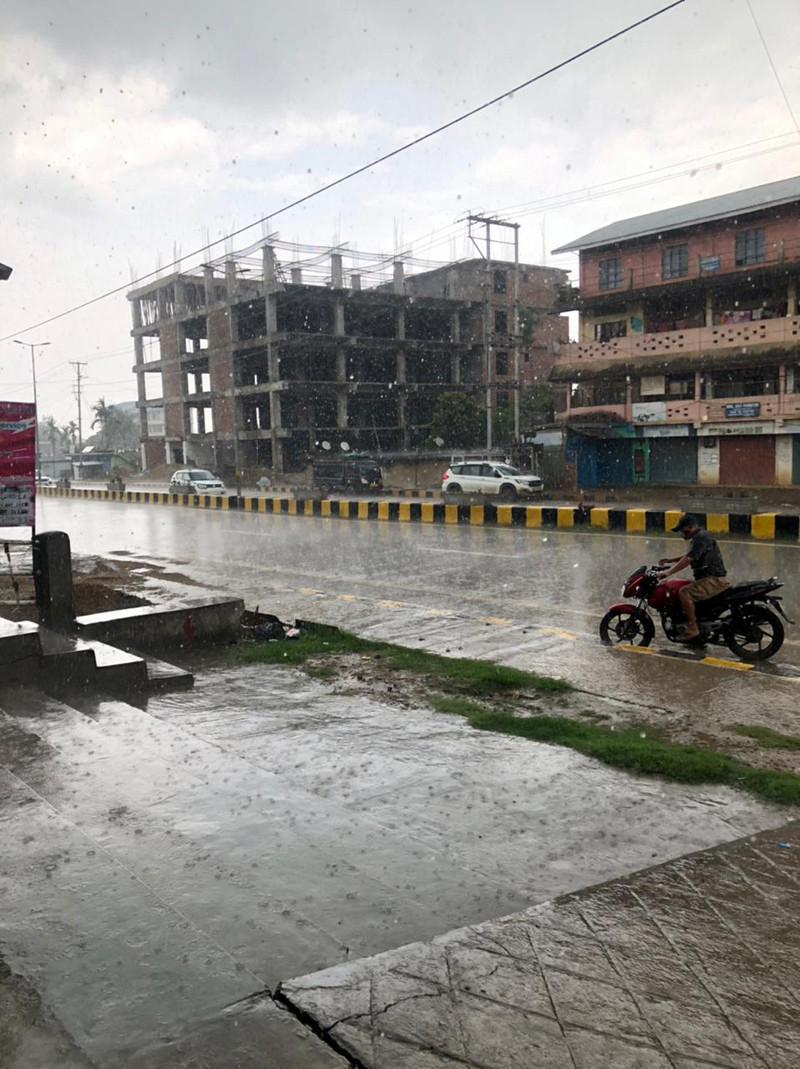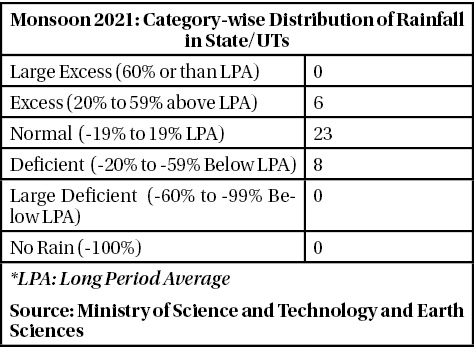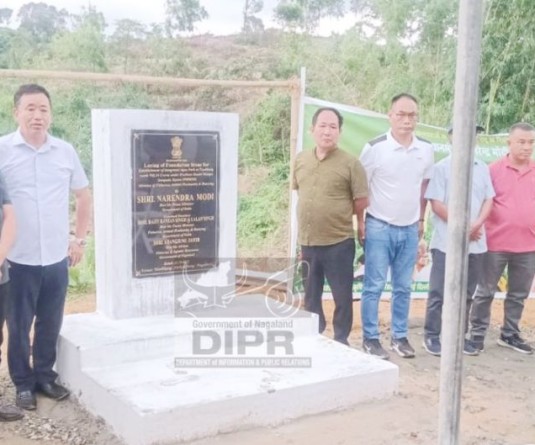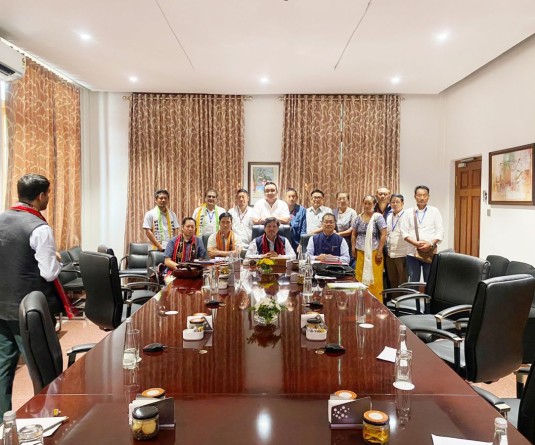
Morung Express News
Dimapur | December 6
Eight States/Union Territories in India including Nagaland had ‘Deficient’ rainfall during the Southwest Monsoon (SWM) season in 2021 while 6 others had ‘’Excess’ rainfall. The June 1- September 30 period is considered the SWM season in India, during which the country receives the most rainfall.
Meanwhile, 23 States/UTs had ‘Normal’ rainfall while the all-India average was 2% above Long Period Average (LPA), stated a written reply by Dr Jitendra Singh, the Minister of State (Independent charge) in the Ministry of Science and Technology and Earth Sciences in the Lok Sabha on December 1.
As per the data provided in the reply, the actual rainfall in Nagaland during the monsoon season was 919.9 millimetres (mm) as against the normal rainfall (LPA) of 1261.8 mm or -27% departure from the LPA.
Besides Nagaland, the states of Assam, Arunachal Pradesh, Meghalaya, Manipur, and Mizoram as well as the UTs of Chandigarh and Ladakh experienced ‘Deficient’ rainfall, the data highlighted.
Six states recording ‘Excess’ rainfall were Andaman& Nicobar Island, Haryana, Delhi, Dadra & Nagar Haveli, Telangana and Tamil Nadu.
In Indian Metrological Department’s (IMD) classification, rainfall up to -59% to -20% from LPA is considered deficient; normal (-19% to 19%); Large Deficient (99% to -60%); Excess (20% to 59%) and ‘Large Excess’ (60% or more).
Monsoon 2021

Deficiency continues post-monsoon
Meanwhile, Dr Singh further informed that the India Meteorological Department (IMD) has carried out an analysis of observed monsoon rainfall variability and changes of 29 States & Union Territory at State and District levels based on the IMD's observational data of recent 30 years (1989- 2018) during the Southwest monsoon season from June to September (JJAS).
As per the report published on March 30, 2020, five states - Uttar Pradesh, Bihar, West Bengal, Meghalaya and Nagaland have shown significant decreasing trends in southwest monsoon rainfall during the recent 30 years period (1989-2018), he highlighted.
The annual rainfall over these five states along with the states of Arunachal Pradesh and Himachal Pradesh also show significant decreasing trends, he added, though noting that other states do not show any significant changes in southwest monsoon rainfall during the same period.
It must be noted here that on June 17, the Department of Agriculture (DoA) Nagaland informed that the State is witnessing a “drought-like situation” due to deficient and erratic rains from December 2020 to April 2021. However, the arrival of monsoon did not improve the situation much.
The State had earlier declared a ‘drought-like situation’ in 2012 and 2009.
In addition, rainfall data post SWM period (from October 1-till date) has not been encouraging either. As per the latest IMD data on ‘State-wise rainfall distribution,’ Nagaland recorded a 75.7 mm of rainfall from October 1-December 4, against the normal average of 159.9 mm.
This represented a 50% departure from the normal average and further deterioration of rainfall Nagaland, further indicating possibility of water ‘scarcity’ during the long dry winter spell, as noted by The Morung Express in August.
The country as a whole, however, was 50% above normal average during the intervening post monsoon period.
Seven states were experiencing ‘Deficient’ rainfall during the same period, IMD data on December 4 stated, while Manipur was experiencing ‘Large Deficient.’
However, 17 States/UTs recorded ‘Large Excess’ and 9 ‘Excess’ during the post monsoon October 1-December 4 period, it informed. There was normal rainfall in 3 States/UTs.
Meanwhile, the IMD updated on Saturday that the Cyclonic Storm ‘JAWAD’ over west central Bay of Bengal is expected to bring rainfall at isolated places over Assam & Meghalaya, Mizoram and Tripura on December 5 and 6. However, no such forecast was made for other North Eastern States, including Nagaland.





